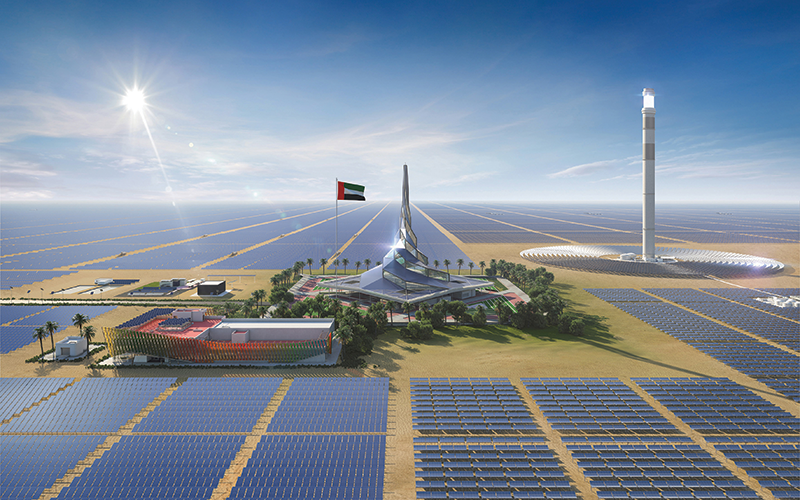Creating a global market for green hydrogen
A competitive global hydrogen market requires international collaboration, says UAE Minister of Energy and Infrastructure HE Suhail Mohamed Al Mazrouei

Green hydrogen is taking its place on the global stage as an innovative and promising newcomer in renewable energy. The production of green hydrogen is rising, with it rightly set to become an integral part of many nations’ ambitious net-zero strategies as a supplement to fossil fuels. Indeed, just this summer, the UK released its own National Hydrogen Strategy to help meet its 2050 net-zero targets, including the goals to replace up to a fifth of natural gas with green hydrogen.
UAE hydrogen future takes shape
In the UAE we launched our Energy Strategy 2050, in which we unveiled our roadmap to become an international hub for clean energy, including the construction of the Middle East’s first green hydrogen plant in Dubai. This provides clean fuel to power all transportations during Dubai Expo 2020, an early demonstration of the real-world applications of green hydrogen. With an AED600bn (US$163bn) investment planned, we are also now on the road to 2050 net zero – which we see as a major economic growth opportunity.
Despite the increase in both interest and demand and a deepening climate crisis, green hydrogen production remains in its infancy, and we need an international collaboration to accelerate its development.
As the fuel of the future, green hydrogen now requires significant global investment. Green hydrogen is a new and transformative carbon-neutral fuel that has the potential to decarbonise major industries that are traditionally hard to abate, such as steel and aluminium production and heavy transport. As an energy source produced entirely from renewable-powered electrolysis (a process that involves splitting water to produce hydrogen and oxygen), it is an attractive cleaner alternative to the typical fossil fuels such as coal and oil, and its benefits are clear.
However, despite being considered as the most effective fuel for the future, it currently accounts for just 0.1% of the hydrogen produced globally. This needs to change if we aim to collectively reach our ambitious global climate goals. We need to increase the production of renewable electricity required to produce green hydrogen. The UAE has a geographical advantage for such clean energy production. Our weather conditions ensure a prime climate for the solar energy generation – in fact, BMW has recently decided to use Emirates Global Aluminium’s solar-smelted CelestiAL aluminium in its cars, which is an important first step into a journey to deliver carbon-neutral smelted metals.
With targets to increase the contribution of clean energy from 25% to 50% by 2050, the UAE is prioritising investment in the development of green hydrogen production, while utilising our advantageous and reliable weather conditions to do so. Gulf Cooperation Council (GCC) countries alone could provide 30% of hydrogen demand in Europe and East Asia by 2050 for such reasons.
As the fuel of the future, green hydrogen now requires significant global investment
It’s our hope that in the future, green hydrogen will play a significant role in our domestic strategy to meet our own 2050 net-zero goals, and also in assisting other countries by exporting hydrogen.
The road to green hydrogen is paved with collaboration
The challenge we face now lies in creating a global market for green hydrogen, and unlocking collaboration will be key. Given that all these technologies are in relatively early stages of development, it is imperative that we collaborate to achieve net zero faster. For many countries, green initiatives are at the heart of their recovery plans following the economic disruption of COVID-19, but we cannot solve these issues in silos. To tackle the climate emergency and harness the power of transformative fuels that will make a real and lasting impact on our world, we must combine our knowledge and expertise globally to meet these targets.
International co-operation and the pooling of cutting-edge research will help push these technological advancements to the forefront of global agendas. For example, here in the UAE, we have signed deals with Japan to develop an international hydrogen supply chain, and have also established a strong partnership with Germany that allows us to deploy hydrogen technology together.
We want to combine global talents, investing in technology, research and academic partnerships, and using our strong trade links to foster a viable, global green hydrogen market.
We are at a crucial time in the evolution of green hydrogen, and through collaboration, we can accelerate its growth for a carbon-neutral future. As we edge closer to 2022, we have a key opportunity to put the development of a green hydrogen market at the front of the global agenda. This global challenge requires an equally global response. We are in a strong position to produce vast quantities of green hydrogen fuel, but we must now lean on each other’s expertise and research, working globally to meet the climate crisis head-on.
By His Excellency Suhail Mohamed Al Mazrouei, UAE Minister of Energy and Infrastructure, and board member of the Abu Dhabi National Oil Company ADNOC and Mubadala Investment Company
The fuel of the future
- Only 0.1% of hydrogen produced globally is green
- GCC countries could provide 30% of hydrogen demand in Europe and East Asia by 2050
- A net-zero world will require 306 million tonnes of green hydrogen per year by 2050*
- Green hydrogen could supply up to 25% of the world’s energy needs by 2050 †
- The addressable market for green hydrogen could be worth U$12trn by 2050 †
Sources:
*International Energy Agency,
†Goldman Sachs






Follow us
Advertise
Free e-Newsletter